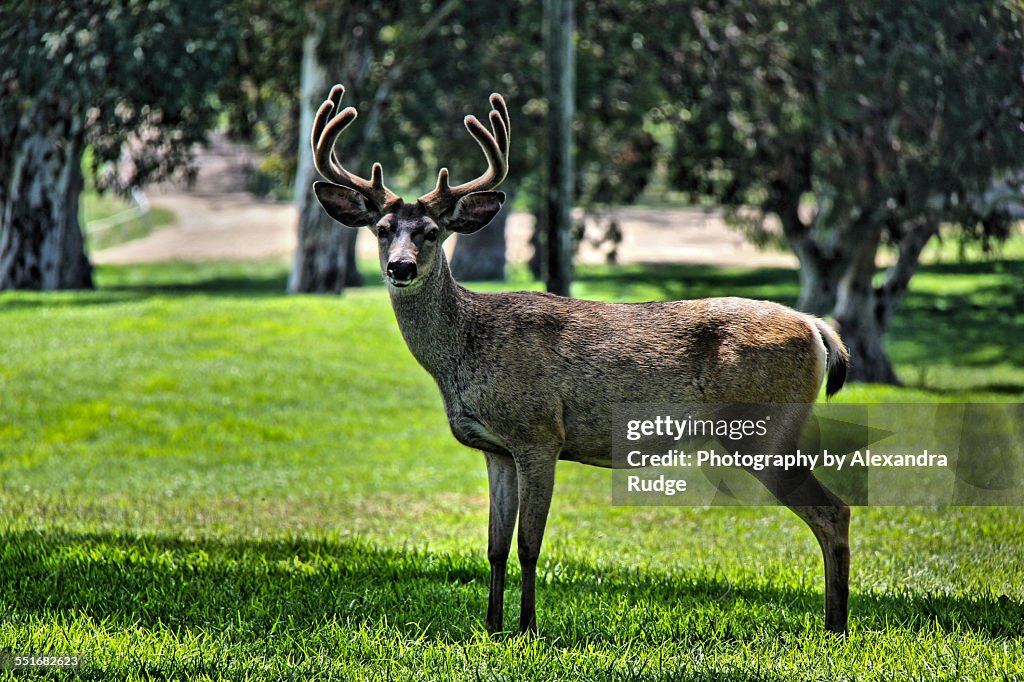A mule deer. - Fotografia de stock
The mule deer, Odocoileus hemionus is a deer indigenous to western North America; it is named for its ears, which are large like those of the mule. There are believed to be several subspecies, including the black tailed deer. Unlike the related White tailed deer (Odocoileus virginianus), mule deer are generally more associated with the land west of the Missouri River, and more specifically with the Rocky Mountain region of North America. Mule deer have also been introduced to Argentina.The most noticeable differences between White tailed and mule deer are the size of their ears, the color of their tails, and the configuration of their antlers. In many cases, body size is also a key difference. The mule deer's tail is black tipped, whereas the whitetail's is not. Mule deer antlers are bifurcated; they "fork" as they grow, rather than branching from a single main beam, as is the case with whitetails. Each spring, a buck's antlers start to regrow almost immediately after the old antlers are shed. Shedding typically takes place in mid February, with variations occurring by locale. Although capable of running, mule deer are often seen stotting also called pronking with all four feet coming down together. Black tailed deer have also been introduced to Kauai. The mule deer is the larger of the two Odocoileus species on average, with a height of 80, 106 cm at the shoulders and a nose to tail length ranging from 1.2 to Of this, the tail may comprise 11.6 to 23 cm . Adult bucks normally weigh, although trophy specimens may weigh up to 210 kg. Does are rather smaller and typically weigh from 43 to 90 kg , with an average of around 68 kg.

COMPRAR UMA LICENÇA
Todas as licenças royalty-free incluem direitos globais de utilização, proteção abrangente e preços simples com possibilidade de descontos de volume
475,00 €
EUR
DETALHES
Crédito:
Creative nº:
551682623
Tipo de licença:
Coleção:
Moment
Tamanho máx.:
5184 x 3456 px (43,89 x 29,26 cm) - 300 dpi - 5 MB
Data do upload:
Local:
Griffith Park. Los Angeles., California, United States
Inf. sobre autorização:
Não é necessária uma autorização
Categorias: